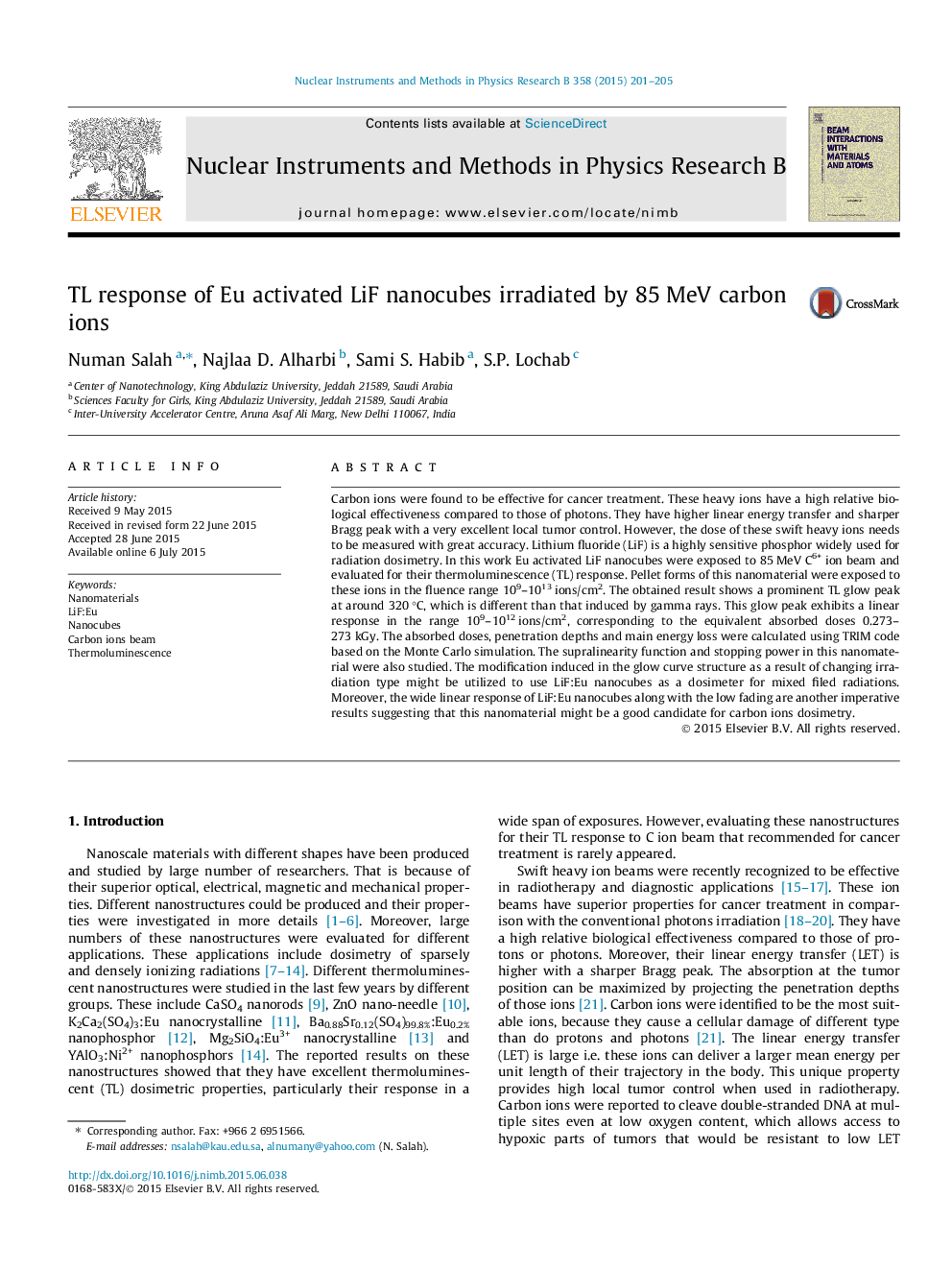| Article ID | Journal | Published Year | Pages | File Type |
|---|---|---|---|---|
| 1682661 | Nuclear Instruments and Methods in Physics Research Section B: Beam Interactions with Materials and Atoms | 2015 | 5 Pages |
Carbon ions were found to be effective for cancer treatment. These heavy ions have a high relative biological effectiveness compared to those of photons. They have higher linear energy transfer and sharper Bragg peak with a very excellent local tumor control. However, the dose of these swift heavy ions needs to be measured with great accuracy. Lithium fluoride (LiF) is a highly sensitive phosphor widely used for radiation dosimetry. In this work Eu activated LiF nanocubes were exposed to 85 MeV C6+ ion beam and evaluated for their thermoluminescence (TL) response. Pellet forms of this nanomaterial were exposed to these ions in the fluence range 109–1013 ions/cm2. The obtained result shows a prominent TL glow peak at around 320 °C, which is different than that induced by gamma rays. This glow peak exhibits a linear response in the range 109–1012 ions/cm2, corresponding to the equivalent absorbed doses 0.273–273 kGy. The absorbed doses, penetration depths and main energy loss were calculated using TRIM code based on the Monte Carlo simulation. The supralinearity function and stopping power in this nanomaterial were also studied. The modification induced in the glow curve structure as a result of changing irradiation type might be utilized to use LiF:Eu nanocubes as a dosimeter for mixed filed radiations. Moreover, the wide linear response of LiF:Eu nanocubes along with the low fading are another imperative results suggesting that this nanomaterial might be a good candidate for carbon ions dosimetry.
